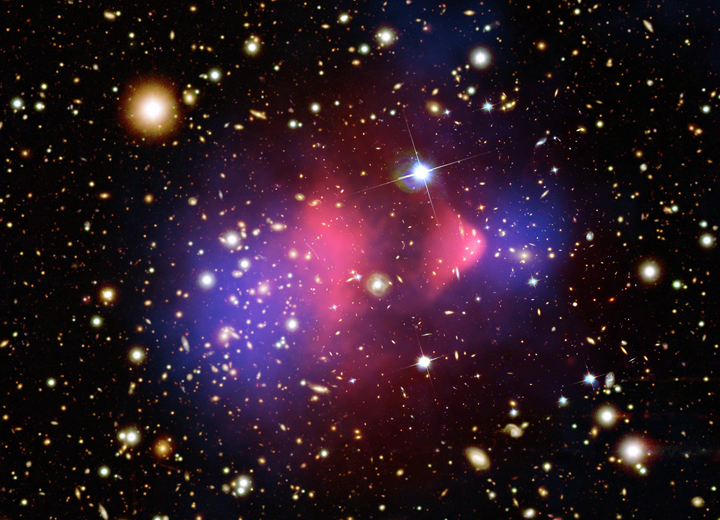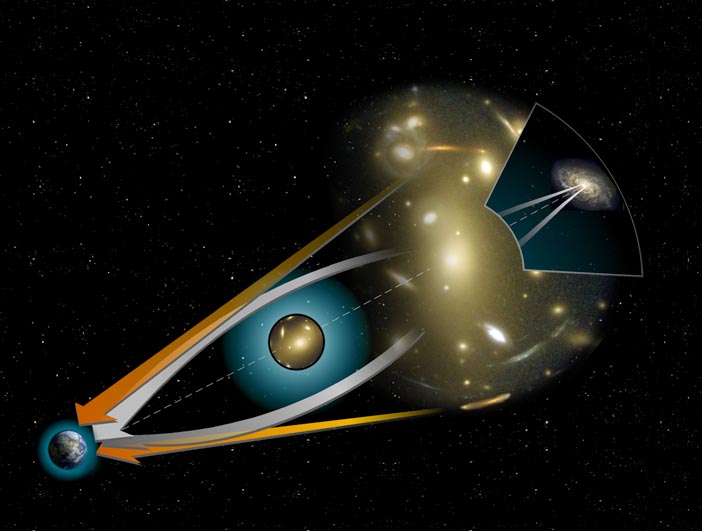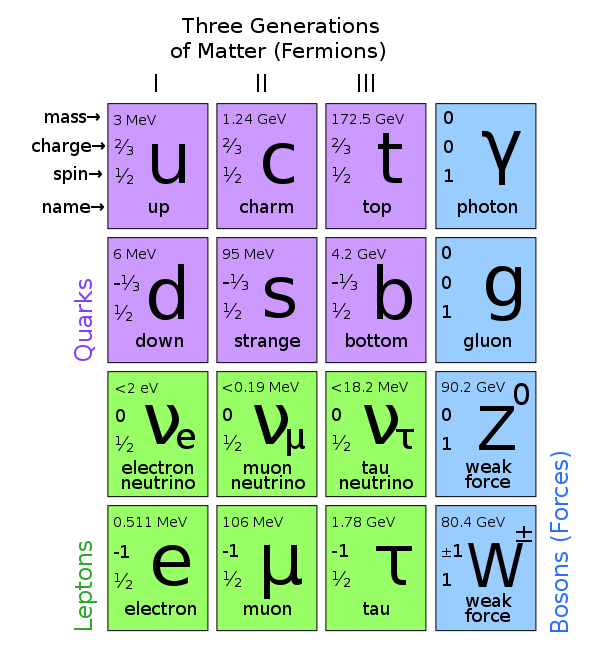Dark Matter in the Universe

What is exciting about Cosmology today is how much we do not know. The observable universe - baryonic matter we are fairly sure comprises only a few percent of the total mass of the universe. The rest is a mystery, but mainstream theories split it between Dark Matter and Dark Energy.
I work at the African Institute of Mathematical Sciences (AIMS), and we are blessed with some great visiting lecturers, and I have followed the courses on Cosmology and Quantum Mechanics with interest. I have written about AIMS and their new research centre before.
Cosmological Scale

Gravitational lensing
There have been recent discoveries, newer than the Bullet Cluster, which seem to confirm the presence of Dark Matter.
Since we can’t ‘see’ Dark Matter, where do these observations come from? The most promising method is through Gravitational Microlensing, similar to passing a weak magnifying glass over a desk. A large massive object, whether visible (baryonic) or not (Dark Matter) will bend light waves coming from directly behind the object. It is not really the same as an optical lens, because light passing closest to the centre bends further than that further out.
But - it does increase the apparent brightness of objects directly behind. If we observe the objects over time, our magnifying glass will show varying brightness as the lens and target shift from our perspective. From these calculations can be made of the mass of the gravitational lens. So, observing using gravitational microlensing requires a time dimension to viewing - a historical survey perhaps.
Separating out the observable mass (stars and galaxies) we can see the distribution of non-observable mass. The MCSJ0025 cluster referred to above appears to show two galaxy clusters colliding. When galaxies collide, they mostly pass right through each other - odds are against one star going Blam! right into another. However, the interstellar gas does interact on a local scale, ’tangling’ the visible portions of the galaxy clusters.
The Hubble Space Telescope and Chandra X-ray Observatory appear to show that the Dark Matter portions of the galaxy clusters -significant invisible lumpiness that is gravitationally attracted to the cluster - passes straight through each other - flying out the other side through the windscreen, as it were. That is the portion coloured blue in the pictures above.
Quantum scale
At the Quantum scale other intriguing discoveries are being made - watch that space (not this one).
There is another aspect of mass that we completely fail to understand. The baryons that make up the vast majority of our tangible world are protons and neutrons - both made up of three quarks - UUD and UDD. However, if their masses are compared totheir components :-
- Proton - 938 MeV
- Neutron - 939 MeV
- Up Quark - 1.5 – 4.0 MeV
- Down Quark - 4 – 8 MeV

Standard Model of Elementary Particles
You can see the massive disparity. The strong force appears to have multiplied the mass of the component quarks a hundred-fold. Quark masses cannot be measured in isolation, as they seem always bound into Hadrons. Their relative masses can be calculated though.
We understand our ignorance in this area. There are huge discoveries to be made that might be as revolutionary as General Relativity. Maybe Weakly Interacting Massive Particles (WIMPs) that are theorised to be behind Dark Matter glue in at the Quantum level to add mass to Hadrons. Or maybe I display my ignorance by even suggesting that.
Nobody really knows.